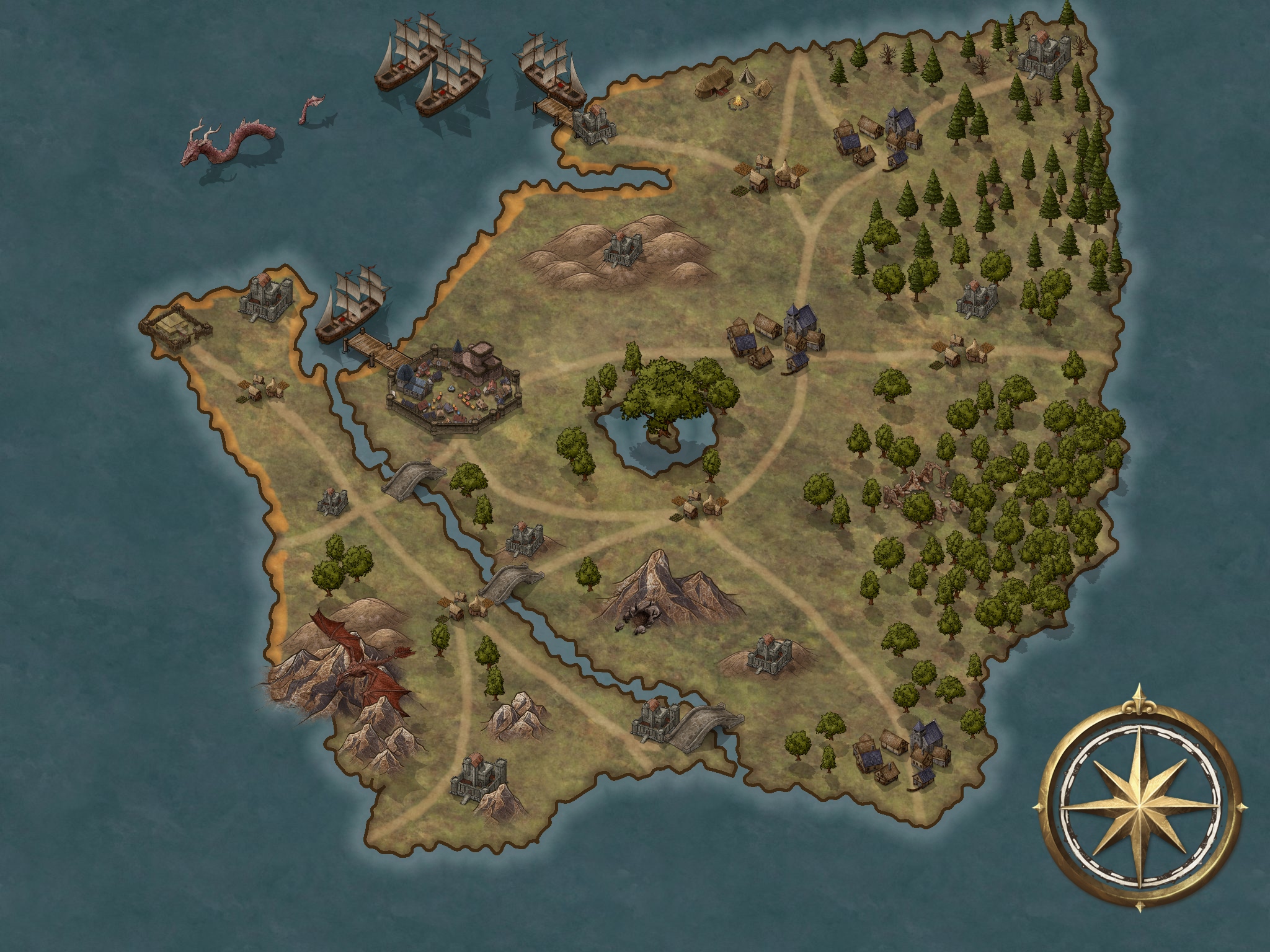Normania
Geography
The landscape of Normania is a large flat, standing a fair bit above sealevel with the cliffs overlooking a pearl-white beach to the northwest. Normania is also the most central of the regions currently held by the Order of the Falcon. To the west, the peninsula of Brietaine stretches out from a grand landbridge. In the south, hills and mountains reach out to form great ranges. One leading to the region of Gothangela, the other forming a natural wall with entrance to Oquitaine. In the east, great woods with dark and forboding omens reach into Lore. North, the flat hills drop the altitude near the borders of the Marche.
The region has a vast amount of fresh water rivers, which spring out of the hills found all over the flats. Often, these sources and springs are protected by steampunk castles which tower from their hillside heights, or in the case of larger hilltops, an entire village might be found thriving on it's soil. Around the hills and the rare mountains, vast networks of rails and train networks can be found.
These rails are well establish, often maintained and even patrolled by regiments of Normani cavalary, which patrol their routes along the cities and major villages.
Fauna & Flora
Normania as a flat open landscape filled with glades, plethora of rivers and bountiful shrubbery is a paradise for horses. These noble beasts are well bred by nature itself and most of them near tame by their regions lack of wild beasts, yet at the same time they're kept wild enough by the hands of ranchers that use them to supply the army with warsteeds for the cavalary. The long white beaches, windling hills and flat terrain also gives them a lot of various breeds of horses that roam freely and can be used for different purpuses.
Natural Resources
The hills of Normania are known not only for their fresh water supply, though also it's rich amount of metals such as iron and copper. These resources has allowed the region to spare their wealth being mostly self sufficient in gathering materials needed to build, maintain and also use their industries.
History
The first founding of Normania happened thousands of years ago, shortly after forces from different groups of a massive Peregonian expedition first made landfall around the Blackwood. The area of Normania wasn't enshrouded by the dark woods, yet ripe with resources. The many tribes mostly stayed out of the flat, due to it's lack of cover. Making anyone who'd try to settle there ample targets for conquests, slavery and sacrifice. The noble knights of Peregon would not easily suffer a fate like this though, as their vastly superior numbers, dicipline and steel weapons made them near imperishable without the aid of the woods.
Normania thusly was conquered without a lot of bloodspill, as most of the tribes would run beyond the hills and to the depths of their guarding Blackwood. Though, a few weaker tribes ended up joining civilization from free will. The protection of their noble knights like a candle in the dark, against the encroaching powers of the abyss.
Ever since, Normania has had mostly smooth sailing as one of few regions to mostly avoid the vicious wars that came to form Diestria, accompanied by the internal ones to come. Instead they mostly served as the second greatest wine producer, after Oquitaine. This neutral stance slowly changed after the modern events of the Chimera War. An event consequential to the rapidly developing industry birthed from Westport's Technological Revolution, accompanied by aristocratic investments in their efforts. Mainly granted out of their close rival and friend of the Oquitainian baronies.
The Chimera War eventually lead into a full blown war between the Red Clergy and Normanian officials, over mentalistic research carried out by one house Ashford. Near twenty years of cooporation blown up in the blink of an eye, as it was believed the dark gods of the Abyss had finally managed to etch their claws into Normania. Millenia after their past worshippers were driven out by the knights.
Tourism
Plenty of higher middleclass citizens as well as the aristocracy enjoy to take the trains around Normania and beyond, as it leads through most regions of the Empire. At least all stabile ones, accompanied by a road to Westport which continues all the way through the Golden Dunes. Passing the grand Capital of the Golden Empire, while ending within the artistic city-state of Barrkad. Thanks to the current war with the Red Clergy, parts of it has been blocked off though. Something which have taken a toll for their otherwise great tourism.
Rough map of Normania
Made with Inkarnate
Type
Region
Included Locations
Included Organizations
Owning Organization
Contested By
History of Normania




Comments